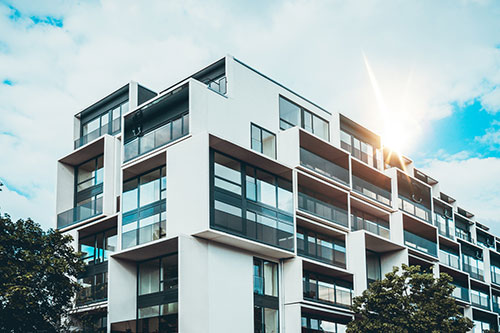Modular homes have become more popular in recent years, thanks in part to the continuing skilled labor shortage. Modern modular homes are well-designed, easy to install and eco-friendly. But should you use them in your builds? Let’s take a look at the pros and cons.
Modular Is Gaining Steam
Demand for residential prefab and modular construction is increasing for several reasons. For one, builders have become frustrated with the continuing lack of skilled labor. At the same time, states have begun relaxing codes and regulations that have limited prefab modular construction. After previous letdowns, many modular manufacturers have also begun prioritizing quality and energy efficiency, resulting in higher performing designs that are much easier to market.
According to probuilder.com, modular manufacturing is humming, with modular-home shipments approaching 15,000 in 2017. That’s the highest figure in five years and 8 percent greater than in 2016, according to Hallahan Associates, which gathers shipment data for the National Modular Housing Council (NMHC). What’s more, modular activity has even increased in the West and Midwest, where demand has been weak historically.
Is it a Good Idea?
Modular home manufacturers champion their products for providing lower costs, excellent craftsmanship, speedy construction and quality building products in controlled settings. For some builders, these selling points make a lot of sense. Before you sign a contract with a modular home manufacturer, however, you need to consider some key points:
It’s far from traditional building. A modular house is much different from stick framing in a subdivision. The homes are created in a factory in programmed stages – from flooring to finished product – and then placed at the jobsite by a crane. Framing, floor treatments, insulation, roofing, drywall, windows, cabinetry, plumbing, siding and lighting fixtures are all completed and installed by a manufacturer’s in-house craftsmen. At that point, the home is shipped, 90 percent complete, to the jobsite, where it is assembled on a foundation.
All modular manufacturers are not the same. Modular construction can surpass stick-built housing in controlled production and principle-tight tolerances; however, quality can vary depending on the manufacturer. To avoid getting burned with cheap products and bad modular designs, you will need to do some leg work. This means asking for references and investigating a modular manufacturer’s reputation. You should also ask to see several finished homes.
It takes a discerning eye. Selecting a modular manufacturer is a major decision. In turn, builders need to think about much more than how much they will be able to save on price per square foot. When comparing manufacturers, it’s important to find out their geographical reach, range of available designs, and whether they will provide training or support for installation issues. You will also want to ensure that a manufacturer can provide modular designs and components that meet state and community codes and regulations.
You can’t make adjustments on the fly. With traditional stick-frame homes, builders can make adjustments for foundations that aren’t quite level, plumb or square. Since modular homes are built off-site, they do not afford this luxury. To install modular components, builders must have a perfectly square foundation. The site will also need to be level within a half inch and be clear of wires and trees, so it can accommodate a crane.
Simpler designs come with fewer headaches. These days, you can design an impressive diversity of modular homes, from Mediterranean-style mansions to charming cottages. That said, just because you can doesn’t necessarily mean you should. Complex designs can quickly squander the savings you were hoping to achieve. They also demand more site work and time. For most builders, it’s a good idea to steer clear of complex roof designs, along with any other features that might complicate matters and siphon away money.
To learn more about new modular or manufactured home warranties, click here.
You can add valuable selling points to your new builds with 2-10 Structural Warranties. Learn more today!








